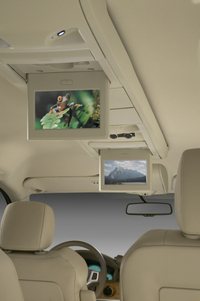Advances in Automotive Infotainment Technologies Changing the Face of Automotive Infotainment
PALO ALTO, Calif.--Entertainment and the automobile have a rich history, and ever since the first commercial radios were introduced in the 1930s by Galvin Manufacturing Corporation, drivers have continually clamored for a variety of entertainment on the move. While today it is possible to package satellite radio, hybrid digital (HD) radio, music, satellite navigation systems, and Internet access into one package in the aftermarket, ongoing initiatives promise a whole new range of value-added services that may only seem a distant dream at present.
New analysis from Frost & Sullivan (http://www.ti.frost.com), Advances in Automotive Infotainment Technologies: Strategic Outlook, finds that the pervasiveness of cellular networks, the rapid drop in cost of global positioning systems and the rise of full-fledged car computers are providing new thrust to the development of advanced automotive infotainment technologies.
Furthermore, a number of technologies are rapidly moving to the automotive industry from the consumer electronics industry. These include but are not limited to operating systems, bluetooth-based communications, full-fledged satellite navigation systems and Internet access on the move.
“Auto manufacturers are getting on the infotainment bandwagon and we will see a number of initiatives to integrate all the systems,” notes Frost and Sullivan Industry Analyst Sivam Sabesan. “The recent announcement by Ford and Microsoft on their collaboration to develop 'Sync' is a trend that is likely to become more prevalent.”
Sync is all about integration and brings together the cellphone, the music player and the car's own entertainment system as one integrated system that can be operated hands free. The device consists of ARM 11 processors with 64 MB of dynamic random access memory (DRAM) and 256 MB of flash memory running on a Microsoft Auto operating system. It will initially be available in twelve cars in 2008, but is to be offered across the board in 2009.
However, one of the major concerns about bringing together the silicon and the automobile industries is that they operate on very different production cycles. Consumer electronics has a production cycle that is measured in months and once a product hits the market, it is either discontinued or upgraded in a year. In contrast, the automobile industry is a lot slower. A normal automobile takes between three to eight years to go from concept to production. As a result, there is a very high probability that an electronic gadget designed into the car will become obsolete even before the car reaches the production line.
An added challenge for auto manufacturers and their Tier 1 electronics suppliers is the exponentially increasing complexity of electronic systems. Developing these systems is relatively easy, but the more complicated part is testing their interactions with the environment. It is not unusual for systems to work perfectly fine in isolation and then cause a number of conflicts when integrated with other systems.
“Good user interfaces, integrated or otherwise, are a definite requirement in the success of an infotainment system,” says Sabesan. “Therefore, the user interface must be intuitive without the driver having to reach for a manual. Reaching into the consumer electronics domain, the iPod's interface is a good example of how an intuitive design can lead to consumer uptake.”
Advances in Automotive Infotainment Technologies: Strategic Outlook is part of the Technical Insights Subscription, which also includes research in the following markets: Strategic Assessments of Developments in European Garage Equipment Markets and Future Outlook, North American Light Hybrid Electric Vehicle Markets, Overview of Central and Eastern European Automotive Production Markets and Strategic Analysis of the Chinese Logistics Market. All research services included in subscriptions provide detailed market opportunities and industry trends that have been evaluated following extensive interviews with market participants. Interviews with the press are available.
If you are interested in a virtual brochure, which provides manufacturers, end users, and other industry participants with an overview of the latest analysis of the Advances in Automotive Infotainment Technologies: Strategic Outlook, then send an e-mail to Vanessa Quezada, Corporate Communications, at vanessa.quezada@frost.com with your full name, company name, title, telephone number, fax number, e-mail address, city, state, and country. We will send you the overview through e-mail upon receipt of the above information.
Technical Insights is an international technology analysis business that produces a variety of technical news alerts, newsletters, and research services.
Frost & Sullivan, a global growth consulting company, has been partnering with clients to support the development of innovative strategies for more than 40 years. The company's industry expertise integrates growth consulting, growth partnership services, and corporate management training to identify and develop opportunities. Frost & Sullivan serves an extensive clientele that includes Global 1000 companies, emerging companies, and the investment community by providing comprehensive industry coverage that reflects a unique global perspective, and combines ongoing analysis of markets, technologies, econometrics, and demographics. For more information, visit http://www.frost.com.
Advances in Automotive Infotainment Technologies: Strategic Outlook
D0D6



